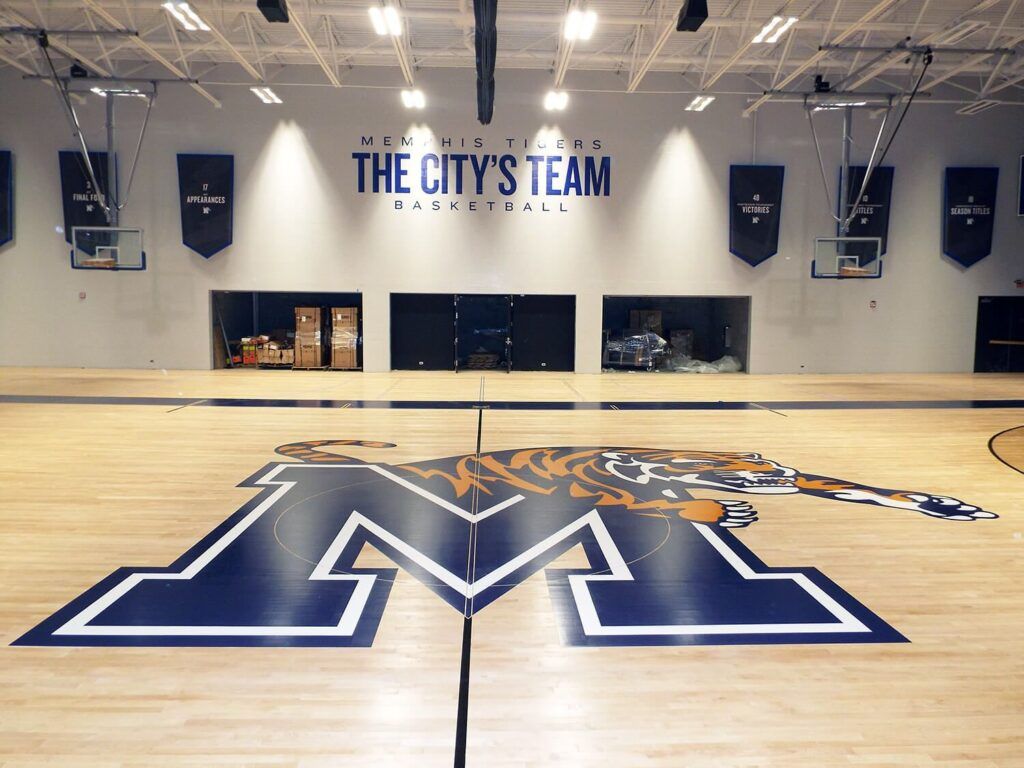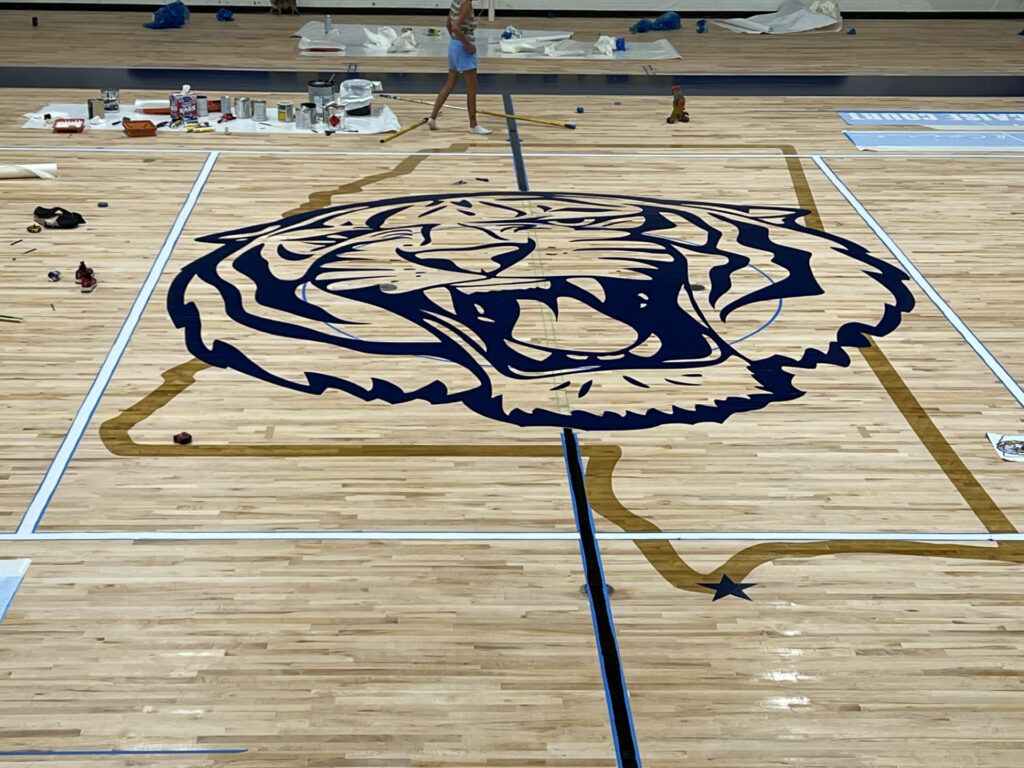Considering installing a new sports floor in your gym or arena? We’re here to help. With so many different ways to use your sports flooring, our courts aren’t just for basketball. We offer a wide range of sports flooring types that provide solutions for any of your arena’s needs, from competitive sports to special events. Keep reading to learn more about the different ways you can use a hardwood court to your advantage – and how to choose the right floor for your needs.
Different Uses
As a sports flooring provider of over 25 years, we’ve helped install hardwood floors for all kinds of different needs. Yoga studios, recreation centers, stages, you name it. Here are just a few of the ways our MFMA-grade floors might work for your facility.
Competitive Sports
By far the most common need for sports flooring installation, the floor is more than just a surface – it’s a part of the game. Hardwood floors are almost synonymous with sports like basketball or volleyball, and for good reason.
They offer the ideal combination of shock absorption, bounce, and traction, essential for high-intensity sports. The quality of the floor can influence the game’s pace, the players’ comfort, and even injury prevention. Sports Floors, Inc. specializes in providing surfaces that meet the rigorous standards of competitive sports, ensuring optimal performance and safety.
Training and Fitness
Training and fitness centers require flooring that can withstand heavy equipment, constant foot traffic, and dynamic workouts. Rubber and synthetic floors are often the go-to choices in these environments. They are durable, easy to maintain, and provide excellent shock absorption, which is crucial for weight training areas.
These floors also offer sufficient grip and stability for high-energy activities like aerobics or CrossFit. By choosing the right flooring, facilities can create a safe and conducive environment for fitness enthusiasts of all levels.
Recreational Activities
Sports floors are not just for athletes; they play a significant role in community centers, schools, and recreational facilities. In these multi-purpose spaces, the floor needs to be versatile. Synthetic floors are particularly beneficial here, as they can accommodate a variety of activities, from sports to assemblies and dances. They are resilient, easy to clean, and can handle everything from basketball games to social events. This versatility makes them an excellent investment for community spaces that host a range of activities.
Stages & Auditoriums
Another versatile application of sports flooring is its use in stages and auditoriums. Due to their durability, sound absorption qualities, and aesthetic appeal. Hardwood floors are known for their resilience and classic appearance, which can provide a visually attractive and acoustically sound platform for various performances and events. The natural wood can enhance the overall ambiance of a performance, adding warmth and elegance to the setting.
Special Events
The adaptability of sports flooring extends to special events as well. Many gymnasiums and athletic centers double as venues for events like exhibitions, dances, or large gatherings. The right flooring can transform a sports facility into a multi-functional space.
For instance, hardwood floors not only provide an excellent surface for sports but also add an elegant touch to formal events. Synthetic floors can be designed to be portable, allowing for quick reconfiguration of the space to suit different needs. This flexibility is a key advantage, making sports floors an ideal choice for facilities that host a variety of events.

How to Choose the Right Floor for Your Needs
Selecting the appropriate sports flooring is a crucial decision that impacts not only the performance and safety of athletes but also the functionality and versatility of the space. Here’s a guide to help you choose the right type of sports floor for your specific needs:
Assessing Your Primary Use
The first step in choosing the right sports floor is to identify the primary activities that will take place on it. Review the list of different sports floors used above to determine how you will use your court. Then, use this information to help you decide which type of floor will work best for your needs. For example:
Competitive Sports: If the floor is primarily for sports like basketball or volleyball, hardwood is often the preferred choice due to its performance characteristics, such as optimal friction, ball bounce, and shock absorption.
Multi-Purpose Use: For facilities that host a variety of activities, including sports, community events, and assemblies, a synthetic floor offers durability and versatility.
Fitness and Training: In areas designated for fitness and weight training, rubber flooring is ideal due to its durability and impact resistance.
Consider the Audience & Frequency of Use
Schools and Community Centers: In these settings, where the floor will be used by a diverse group and for multiple purposes, consider a durable and low-maintenance option like synthetic flooring.
Elite Athletic Facilities: For facilities catering to professional or high-level athletes, investing in high-quality hardwood floors can provide the performance and quality required.
Evaluate Maintenance Requirements
Maintenance is a key factor in the longevity of sports flooring. Here’s what you should know about each type:
Hardwood Floors: Require regular maintenance, including refinishing and resurfacing, to maintain their appearance and performance.
Synthetic and Rubber Floors: These are generally easier to maintain and more resistant to wear and tear, making them suitable for high-traffic areas.
Consider Installation and Lifecycle Costs
The initial installation cost and the long-term lifecycle cost of the flooring should be considered:
Budget Constraints: If budget is a concern, synthetic floors can be a cost-effective solution with a good balance of performance and durability.
Long-Term Investment: For a long-term investment, hardwood floors, though initially more expensive, offer longevity and timeless appeal.
Factor in Safety and Performance
Safety and performance are non-negotiable in sports flooring. Pay attention to these qualities:
Shock Absorption: This is crucial for reducing the risk of injuries. Floors with good shock absorption are essential in high-impact sports.
Traction and Ball Response: Different sports require different levels of traction and ball bounce. Ensure the chosen flooring meets the specific requirements of the sports being played.

Talk with an Expert
When it comes to choosing the right floor for your needs, the best move of all is to talk to a sports flooring expert at Sports Floors, Inc. We’ll walk you through the entire decision-making process, taking into account your unique requirements and goals, so that you can get the best option possible. If you’re ready to get started, call our team to talk with an expert!
